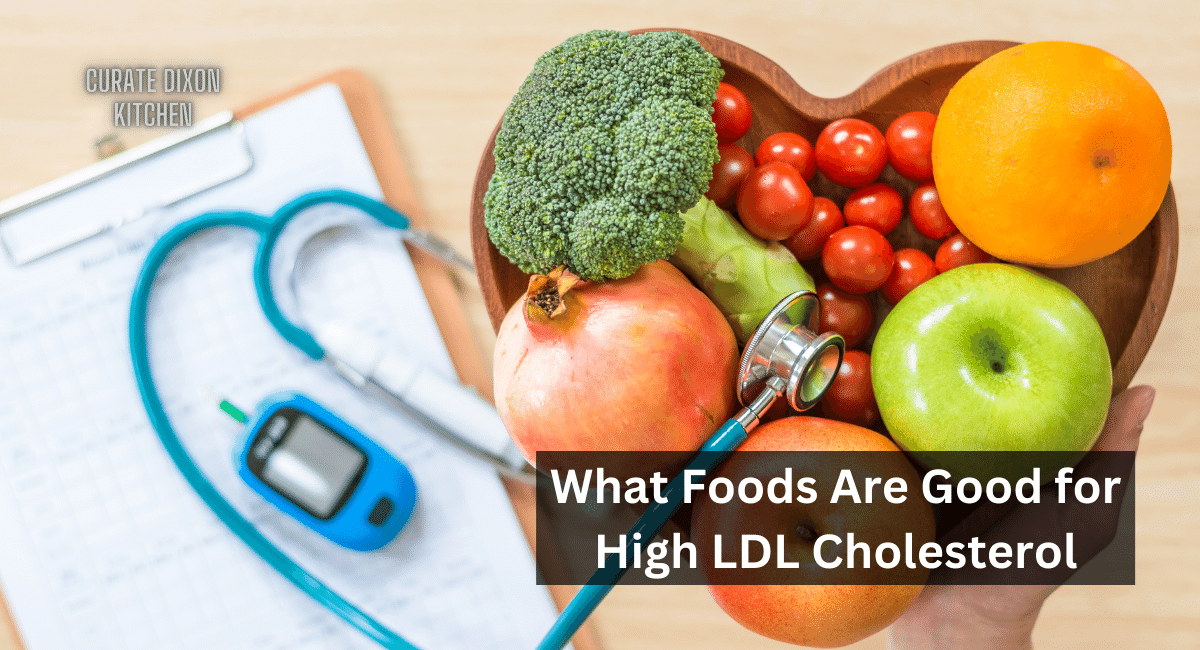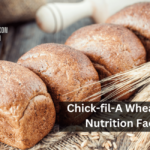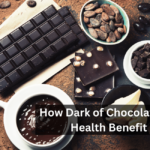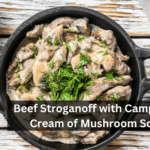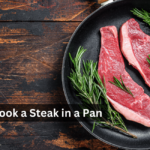Maintaining a healthy lifestyle is important in today’s fast-paced world. One key factor in our overall well-being is managing our cholesterol levels, particularly high LDL cholesterol, which is often called “bad cholesterol.” If untreated, high cholesterol can cause health complications. A balanced diet can help you control it. This article will discuss foods that are beneficial for high LDL cholesterol and offer helpful tips for making healthier food choices.
Understanding Cholesterol
The Role of LDL Cholesterol
Before delving into the specifics of cholesterol-friendly foods, it’s essential to understand the role of LDL cholesterol in our bodies. LDL cholesterol is a specific kind of lipoprotein that carries cholesterol to cells. An excess of LDL cholesterol can accumulate in the arteries, leading to plaque buildup and narrowing of the streets. This can increase the risk of heart disease and stroke.
Differentiating Between Good and Bad Cholesterol
Cholesterol is not inherently bad; it’s essential for the body’s normal functioning. However, it’s crucial to distinguish between LDL (bad) cholesterol and HDL (good) cholesterol. HDL (High-Density Lipoprotein) cholesterol helps remove LDL cholesterol from the bloodstream, reducing the risk of arterial blockages.
The Importance of Diet in Managing LDL Cholesterol
Achieving healthy LDL cholesterol levels largely depends on your diet. By making informed dietary choices, you can effectively reduce your LDL cholesterol and lower the risk of heart disease. To help you in this endeavor, we have provided a comprehensive guide highlighting various foods that can aid in achieving this goal.
Foods That Are Good for High LDL Cholesterol
Soluble Fiber: The Cholesterol-Busting Superhero
Soluble fiber is one of the most potent tools in your arsenal for managing high LDL cholesterol. It works by binding to cholesterol particles and removing them from the body. Here are some soluble fiber-rich foods to include in your diet:
1. Oats:
Starting your day with a bowl of oatmeal can provide a significant dose of soluble fiber. Steel-cut or rolled oats are excellent options.
2. Beans and Lentils:
These legumes are rich in soluble fiber and can be added to soups, stews, or salads for a heart-healthy boost.
3. Fruits:
Apples, citrus fruits, and pears are high in pectin, a type of soluble fiber that aids in cholesterol reduction.
4. Barley:
This whole grain is a versatile addition to your diet, whether in soups, as a side dish, or in salads.
5. Psyllium Husk:
Psyllium supplements or adding psyllium husk to your food can significantly increase your soluble fiber intake.
Healthy Fats: Choose Wisely
Not all fats are created equal. While saturated and trans fats can raise LDL cholesterol, monounsaturated and polyunsaturated fats can have a positive impact. Here are some sources of healthy fats to consider:
1. Avocado:
Avocado is rich in monounsaturated fats, which can help lower LDL cholesterol levels. Enjoy it in salads or spread it on whole-grain toast.
2. Olive Oil:
Mediterranean cuisine frequently uses extra virgin olive oil as an ingredient. It has a lot of monounsaturated fats, which are good for the heart.
3. Fatty Fish:
Omega-3 fatty acids in salmon, mackerel, and trout can decrease LDL cholesterol and reduce the risk of heart disease.
4. Nuts and Seeds:
Almonds, walnuts, chia seeds, and flaxseeds are all rich sources of healthy fats, fiber, and plant sterols. These nutrients can help lower LDL cholesterol levels.
Omega-3 Fatty Acids: A Heart-Healthy Boost
Omega-3 fatty acids have garnered a reputation as cardiovascular champions. They are known to reduce triglycerides and lower the risk of heart disease. Consider including these foods in your diet:
1. Salmon:
This fatty fish is a prime source of omega-3 fatty acids, and it’s delicious and incredibly nutritious.
2. Mackerel:
Mackerel is another fish that’s rich in omega-3s and can be grilled, baked, or pan-fried.
3. Trout:
Trout is a freshwater fish that provides a healthy dose of omega-3s and can be prepared in various ways.
4. Chia Seeds:
These tiny seeds are a plant-based source of omega-3s and can be added to smoothies, yogurt, or oatmeal.
5. Flaxseeds:
Ground flaxseeds can be sprinkled on cereals or used as an egg substitute in baking recipes.
| Food Group | Foods |
|---|---|
| Fruits and Vegetables | – Berries (e.g., blueberries, strawberries) |
| – Apples | |
| – Citrus fruits (e.g., oranges, grapefruits) | |
| – Leafy greens (e.g., spinach, kale) | |
| Whole Grains | – Oats |
| – Barley | |
| – Quinoa | |
| – Brown rice | |
| Fatty Fish | – Salmon |
| – Mackerel | |
| – Sardines | |
| – Trout | |
| Nuts and Seeds | – Almonds |
| – Walnuts | |
| – Flaxseeds | |
| – Chia seeds | |
| Legumes | – Lentils |
| – Chickpeas | |
| – Black beans | |
| – Kidney beans | |
| Healthy Fats | – Avocado |
| – Olive oil (extra virgin) | |
| – Canola oil | |
| – Nuts and seeds | |
| Plant Sterols | – Foods fortified with plant sterols (e.g., margarine) |
| Herbs and Spices | – Garlic |
| – Turmeric | |
| – Ginger |
Plant Sterols: Nature’s Cholesterol Blockers
Plant sterols, naturally occurring compounds found in plants, can lower LDL cholesterol by blocking absorption. Foods are often fortified with plant sterols for heart health benefits.
1. Fortified Foods:
Look for products like margarine, orange juice, and yogurt that are fortified with plant sterols to support your cholesterol-lowering efforts.
Foods to Avoid or Limit
While focusing on foods that can lower LDL cholesterol is essential, it’s equally crucial to be aware of foods that can raise it. Here are some items to avoid or consume in moderation:
Trans Fats: The Ultimate LDL Cholesterol Culprit
Eliminating trans fats from your diet is crucial since they can raise your LDL cholesterol levels and are frequently present in processed and fried foods.
Saturated Fats: Moderation is Key
Saturated fats, while not all bad, should be consumed in moderation. Sources of saturated fats include:
- Red meat
- Full-fat dairy products
- Tropical oils like coconut and palm oil
Practical Tips for a Cholesterol-Friendly Diet
Achieving and maintaining healthy LDL cholesterol levels involves more than just adding or subtracting specific foods. Here are some practical tips to help you on your journey:
1. Meal Planning:
Plan your meals to incorporate cholesterol-lowering foods. Aim to eat a well-rounded diet with fruits, whole grains, lean proteins, vegetables, and healthy fats.
2. Portion Control:
Even healthy foods can lead to weight gain if consumed in excess. It’s important to control portion sizes for a healthy weight and improved cholesterol levels.
3. Regular Exercise:
Combine a balanced diet with regular physical activity. Exercise can help raise HDL cholesterol (the “good” cholesterol) and lower LDL cholesterol.
4. Stress Management:
High-stress levels can contribute to unhealthy eating habits. Practicing stress-reduction techniques like yoga, meditation, or deep breathing exercises can help you make better food choices.
5. Stay Hydrated:
Drinking plenty of water helps maintain overall health and can complement your cholesterol-lowering efforts.
Managing high LDL cholesterol is achievable through a well-thought-out diet rich in cholesterol-lowering foods. Incorporating soluble fiber, healthy fats like omega-3 fatty acids, and plant sterols in your meals significantly improves your cardiovascular health. It’s essential to avoid or limit trans fats and saturated fats, practice portion control, stay physically active, and manage stress to manage your cholesterol levels holistically.
Taking control of your LDL cholesterol and reducing heart disease risk is achievable through wise dietary selections and a heart-healthy way of living. It’s important to seek personalized guidance from a healthcare professional and regularly monitor your progress.
